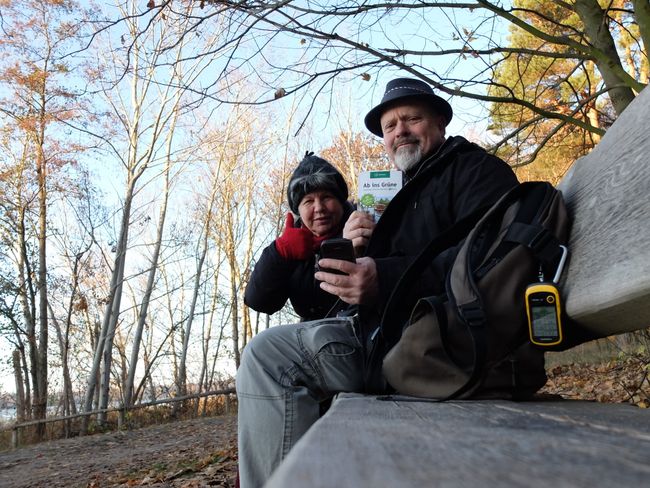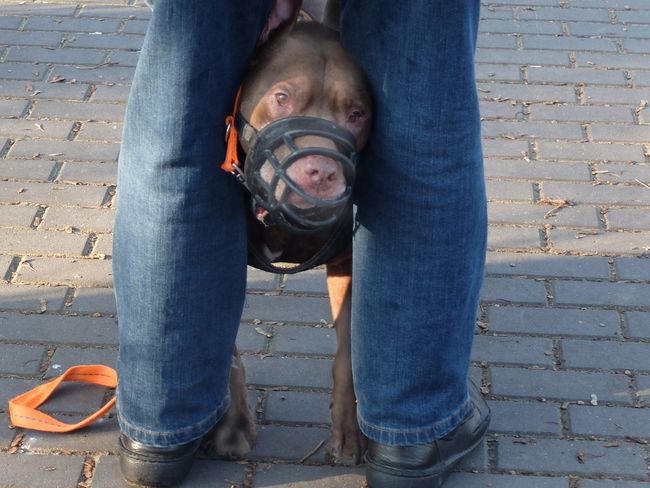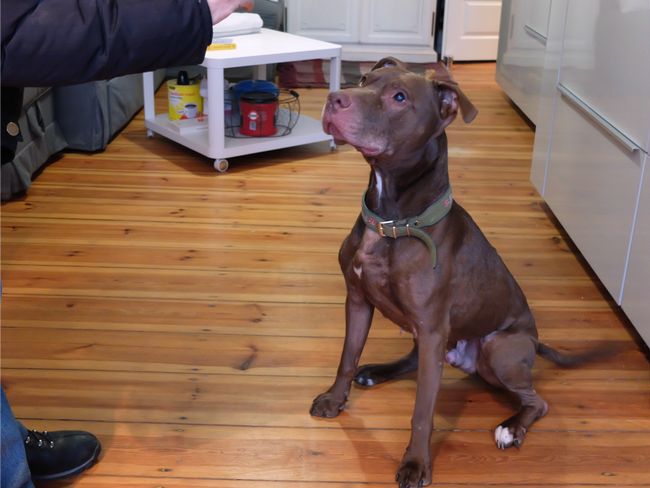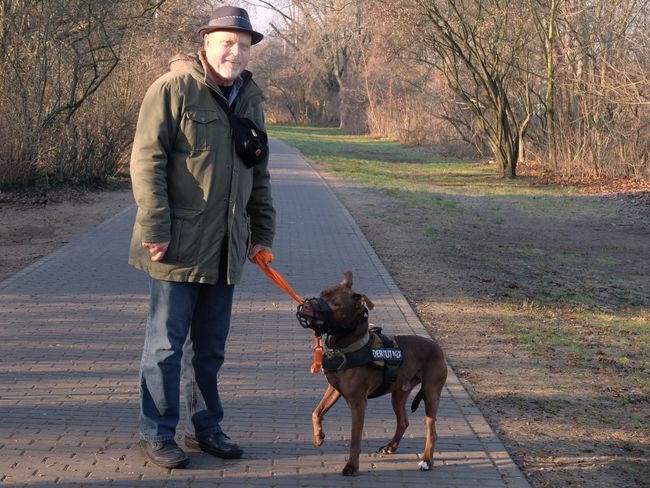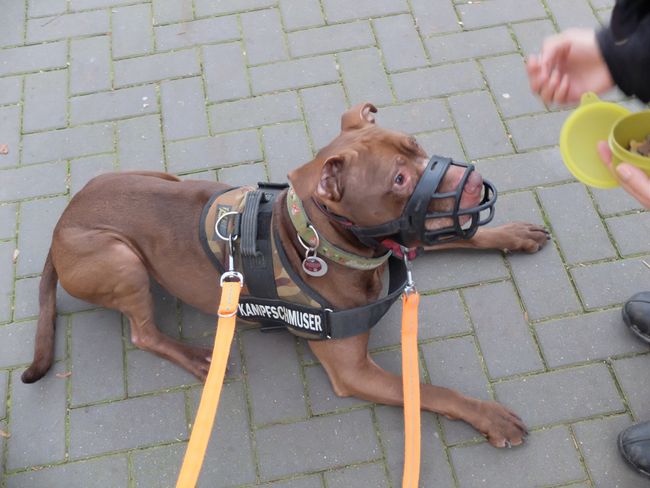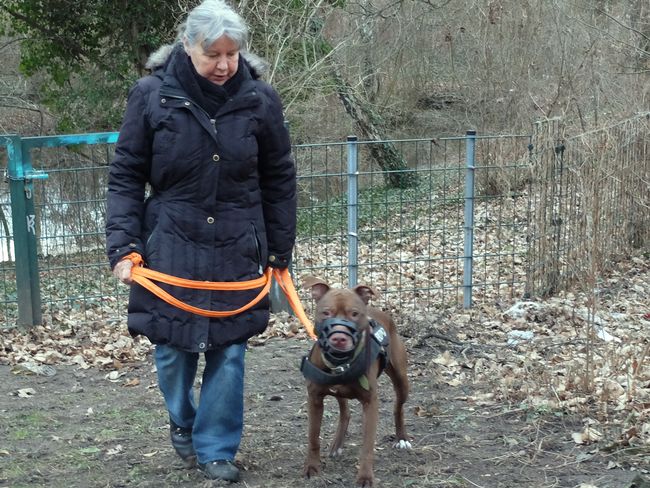The fighting dog
Published: 01.02.2020
Subscribe to Newsletter
About 20 years ago, we associated Neukölln with an image: pierced jogging pants wearers who let themselves be dragged by terrifying dogs through littered streets. Jogging pants and littered streets are still plentiful, but the so-called fighting dogs are hardly seen anymore.
They largely live in hiding, for example, way out in Falkenberg in the largest animal shelter in Europe. One out of every six dogs there is a so-called restricted dog. 'Normal' dogs wait an average of 148 days to be placed. Staffordshire Terriers, Pitbulls, and the like wait 500 days, many have been there for years without hope of adoption.
There is also a fighting dog living in our neighboring apartment. He is an eleven-year-old brown Staffordshire Bull Terrier. For two years, we only heard him when he barked in competition with his small Terrier roommate. We heard him howling alone in the apartment. Otherwise, we made sure to pass him in the stairwell as quickly as possible.
At some point around Christmas, we gathered up the courage and have been walking with him twice a day since then, or rather, letting him drag us through the parks along the Teltow Canal.
We quickly realized that his image as a bully is still generally shared. The reactions range from cautious approach to sheer panic. However, our protégé is an extremely anxious and needy creature. The signs attached by the owner that read 'Cuddle Fighter' and 'He doesn't do anything' don't help at all when the powerhouse pulls on the leash, barks loudly and seemingly aggressively, and lunges at other dogs. The fact that he wags his tail gets completely overlooked as a signal, and the mandatory muzzle only worsens the impression. It signals: this dog is dangerous, even if he actually just wants to play and can't bite because of the muzzle.
We can't waste any more time. They're already putting on the harness next door. We have to go.
Subscribe to Newsletter
Answer (2)
Bir
Sehr schön geschrieben. Wir kennen auch so ein Exemplar, das seinem Ruf überhaupt nicht gerecht wird. „Hero“ ist noch verschmuster als unser Australien Shepherd Mädchen - und das will was heißen.
Jürgen
Wufff!
